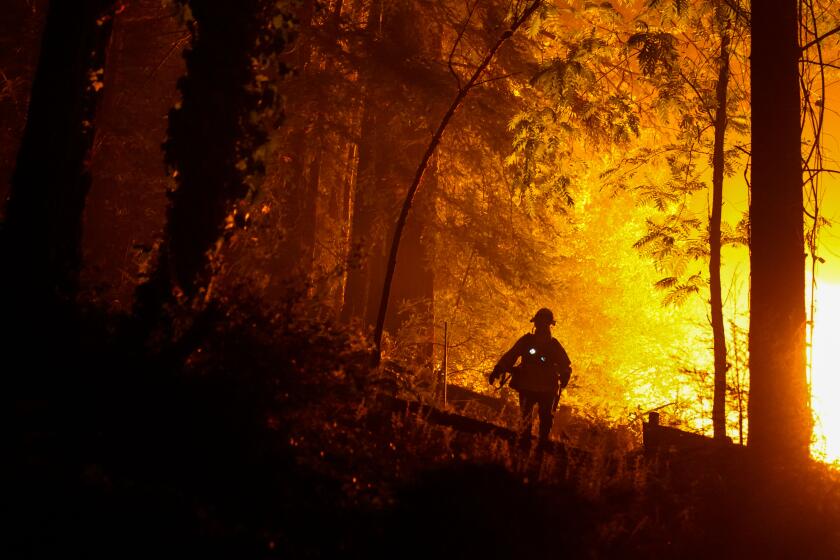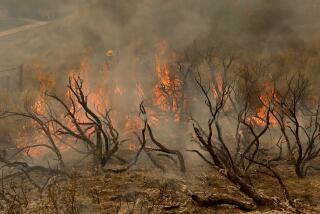In Bonny Doon, a ‘ragtag outfit’ stays behind to save homes from wildfires
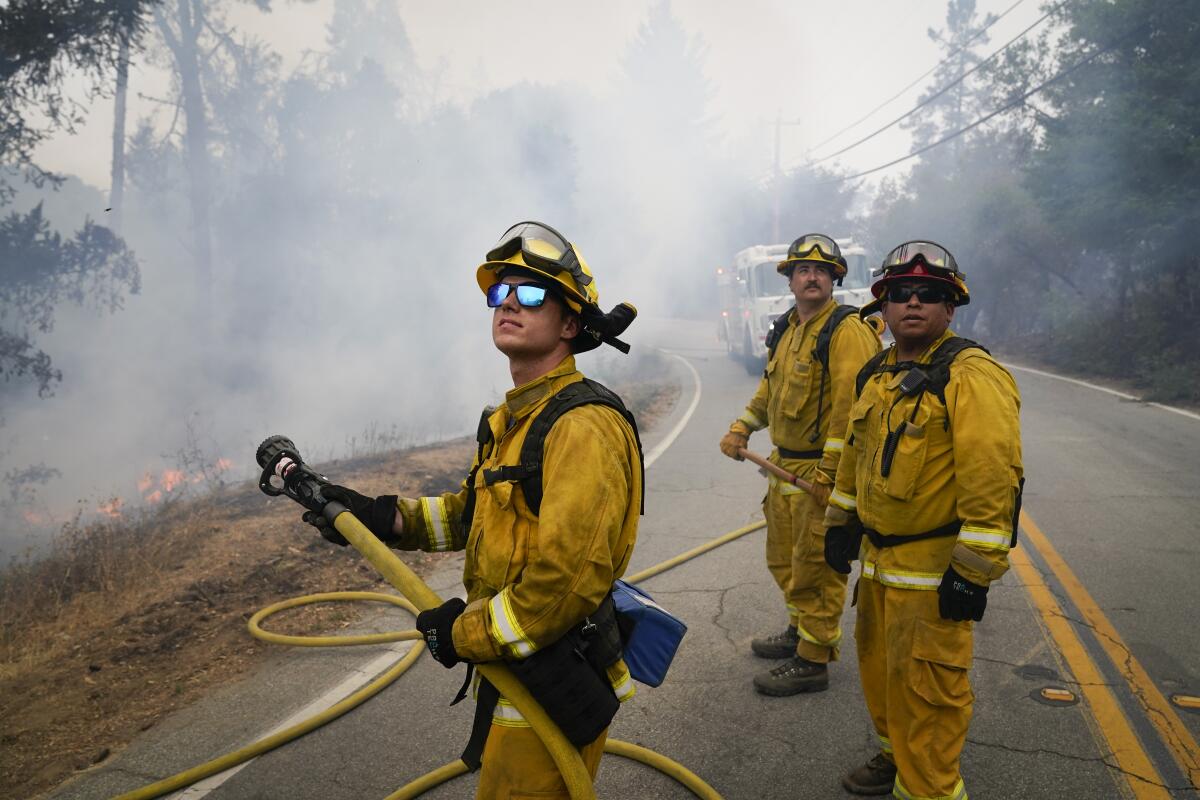
BONNY DOON, Calif. — This town northwest of Santa Cruz is known for its wineries, rugged redwood canyons and a Scottish name said to originate from a Robert Burns song.
Many of its 2,600 residents prefer that the world leave them alone — except when an explosive wildfire is raging through their unincorporated community.
Getting little initial help from outside fire agencies, about 50 Bonny Doon residents decided to stay behind in a bid to save homes from the CZU Lighting Complex fire.
“We’ve been battling it, kind of a ragtag outfit,” Mike Zucker, 70, said Sunday. He said many residents were used to living under the threat of fire and were prepared with water tanks and hydrants.
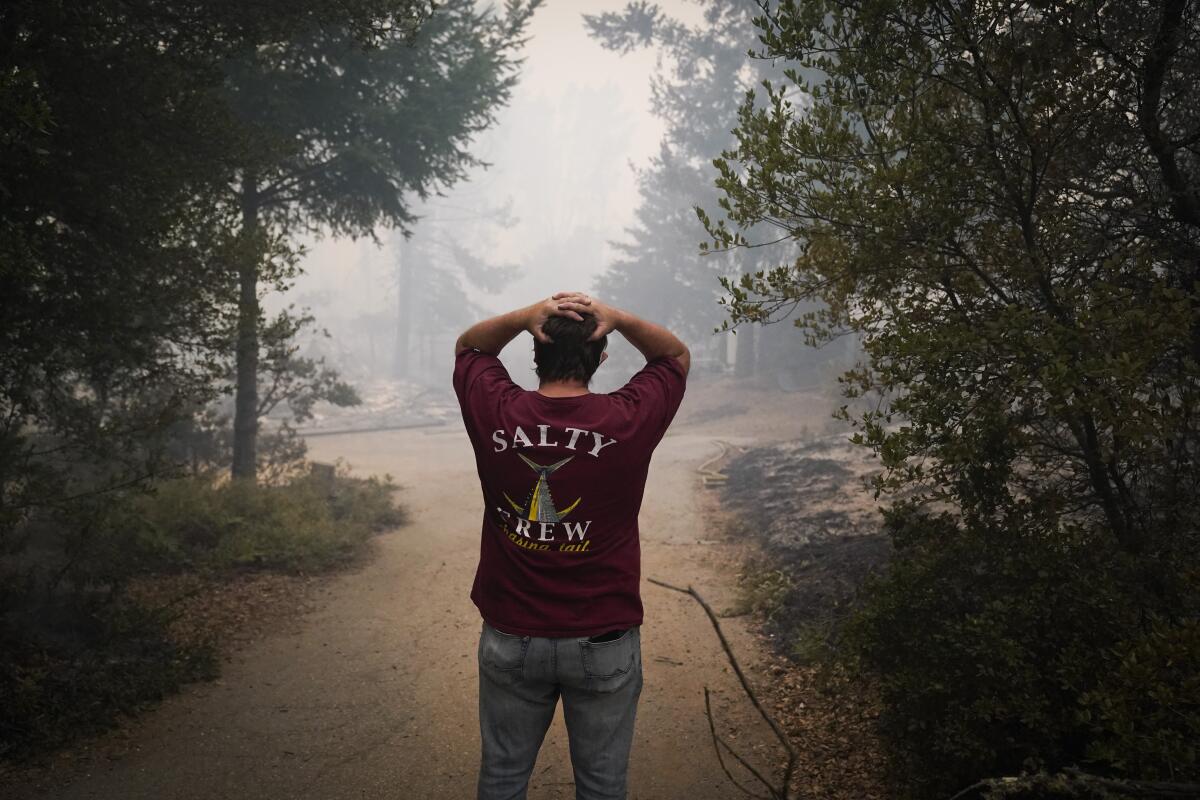
“They basically created their own small fire department,” said Zucker’s nephew Joel Kauffman, 44, who owns a house in Davenport and currently lives in Hawaii. “They’ve got Google Docs, they’re paying attention to weather forecasts and exit routes — they’re extremely well organized. If they hadn’t done this, countless more homes would have burned.”
On Friday, a drive up Alba Road from Ben Lomond to Empire Grade, in Bonny Doon, revealed a post-apocalyptic scene, with the skeletons of trees curled down toward the ashy, wind-swept ground, black and charred. Blown-out shells of water tanks and propane tanks dotted the landscape.
It is not known how many Bonny Doon homes burned last week, but residents were ordered to evacuate — critical since the community is known for its narrow canyon roads, where people and firefighters could easily be trapped in a firestorm. Last Thursday, authorities feared that the fire would continue to rage south into nearby UC Santa Cruz, prompting authorities to evacuate the campus.
Nonetheless, some people stayed, and some stayed to fight flames. Several in Kauffman’s family were working as members of the improvised crew, and have been toiling for days straight without a break.
“They’ve got squads, scouters on motorbikes, chainsaws, bulldozers,” he said. “They’re creating their own fire lines with very little to no support from Cal Fire.
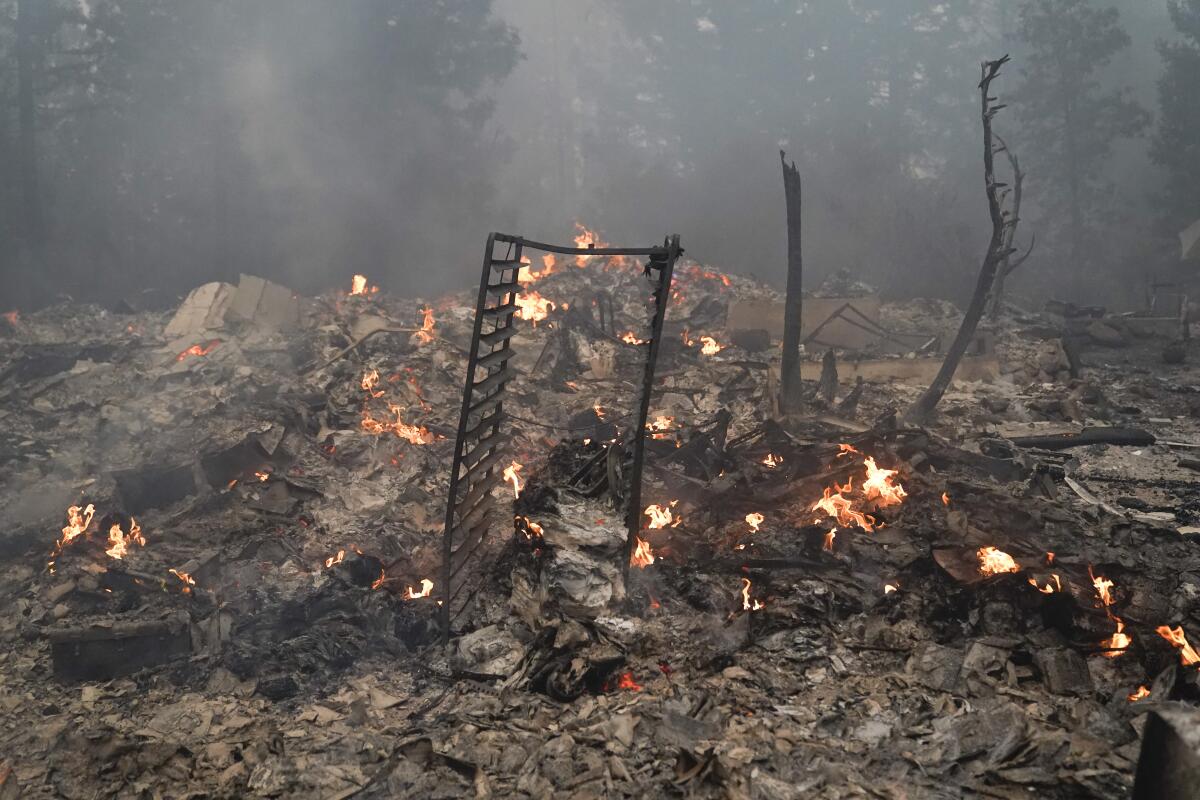
“While there were some Cal Fire crews in the area working hard to fight the blaze, there simply haven’t been enough of them,” Zucker said.
But things appeared to shift Sunday afternoon, when multiple strike teams arrived and helicopters started dumping water from a nearby pond on the community, he said.
Stacie Brownlee, fire chief from the nearby town of Ben Lomond, said that after news stories publicized the California Department of Forestry and Fire Protection‘s lack of support in the area, the agency began sending in minimal reinforcements.
“That’s really turned things around,” Zucker said over the crackle of walkie talkies, which he and other residents have been using to coordinate.
As the fire pushed up from the east, the improvised crew had focused their effort on keeping it from going down into the steep, overgrown Laguna Canyon to the west, which would have funneled the flames toward more homes, including his own, he said.
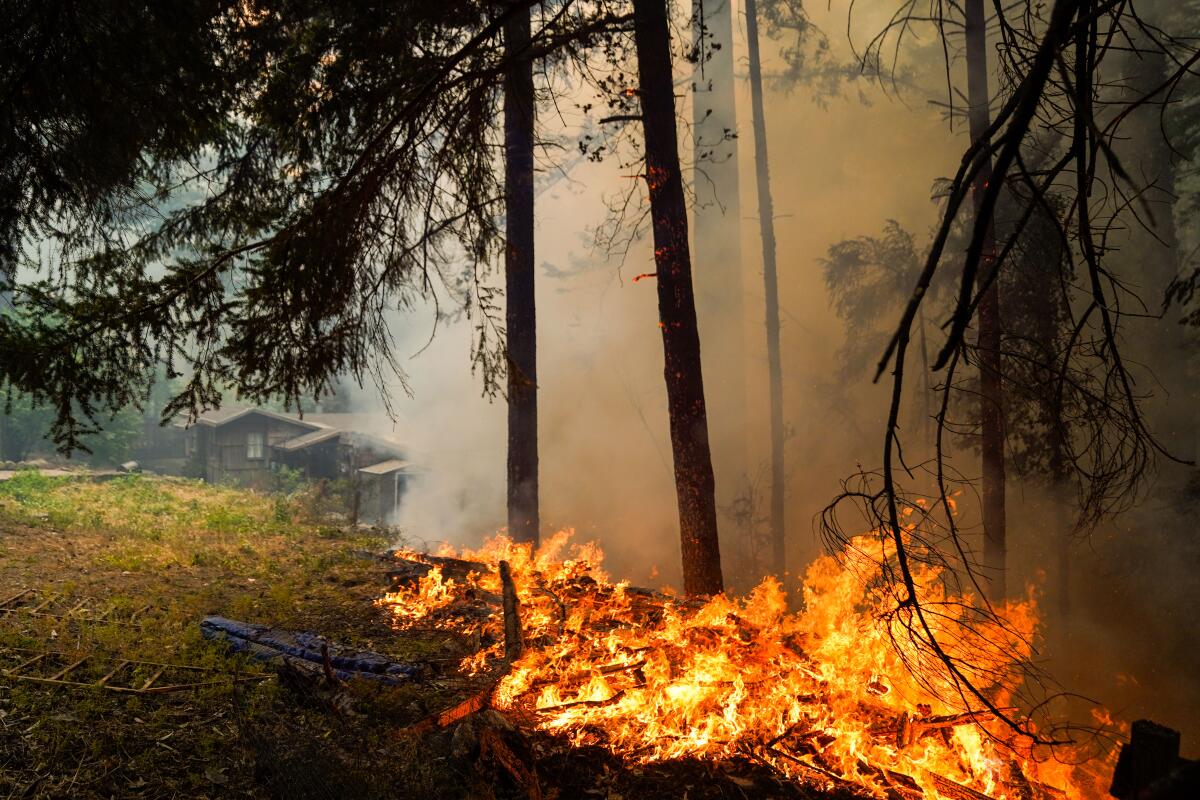
“That would have been a disaster,” he said. “There’s so much fuel it would have burnt considerably further and jeopardized our house.”
They were successful in digging a containment line that stopped the fire before it reached the canyon.
“Everybody was kind of armed with a chainsaw,” Zucker said. “Lots of shovels. The bulldozers being able to make firebreaks.”
Once the fire line was bulldozed through, residents monitored the area to put out small spot fires that kept creeping over, he said. They put out flames on one of his neighbor’s houses three times, he said. It was still standing Sunday.
As word spread of their fight, people snuck through roadblocks to deliver supplies or to lend a hand.
“There are supply chains; there’s people delivering food,” Kauffman said, noting two of his in-laws were headed up there Sunday afternoon. “It’s far from an unorganized group.”
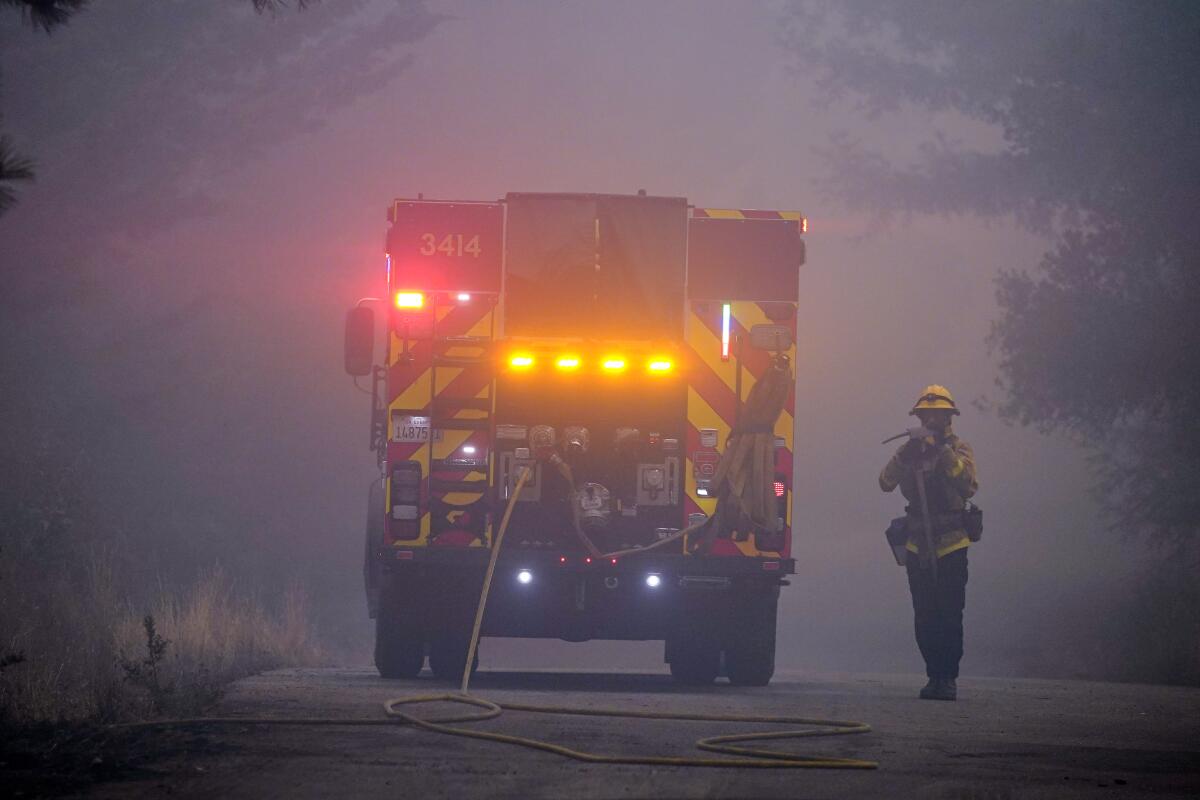
For firefighters in Ben Lomond and Boulder Creek, the residents’ presence is concerning, and also confusing. Stories of people on motorbikes and vans entering the evacuated area to loot abandoned homes have made it hard for the firefighters to know who are residents — or thieves.
“It just adds to the mess up here,” said Todd Ellis, a captain with Ben Lomond’s fire district, as he pointed to two motorbikes speeding down Empire Grade.
By the time the added professional help arrived Sunday, it had been nearly a week since the fire raged into Bonny Doon, sparked by a siege of dry lightning strikes that lit up swaths of Northern and Central California.
Cal Fire said it had crews in the community throughout the week but that the agency has also been forced to contend with serious resource shortages due to the multitude of fires burning.
They couldn’t get help from the state. Or the feds. So volunteer firefighters in two Santa Cruz mountain towns tapped an elite network of emergency responders.
The number of firefighters assigned to the CZU fire had increased to 1,349 by Sunday morning after hovering at about 600 for several days earlier in the week, said Daniel Potter, a Cal Fire a public information officer.
“So in the past few days we have more than doubled the initial firefighting force that was originally on this fire,” he said. “Still, when units get here, we’ll gladly take them, but there’s no saying when they’ll get here.”
Firefighters have also been hampered by a shortage of hand crews due in part to a lack of inmate firefighters, he said.
“That’s always been a problem lately especially now that the whole COVID thing is going and the early release to help minimize the chance of people spreading it in the camp system,” he said.
Even with the added resources that arrived Sunday, Zucker said he planned to remain behind. He was apprehensive about a storm system forecast to hit the area starting Sunday night, but fortunately, the weather system proved mild.
“We know that of course the professionals don’t want amateurs in their way,” Zucker said. “But when there weren’t any professionals up here, we really had no choice.”
More to Read
Sign up for Essential California
The most important California stories and recommendations in your inbox every morning.
You may occasionally receive promotional content from the Los Angeles Times.
